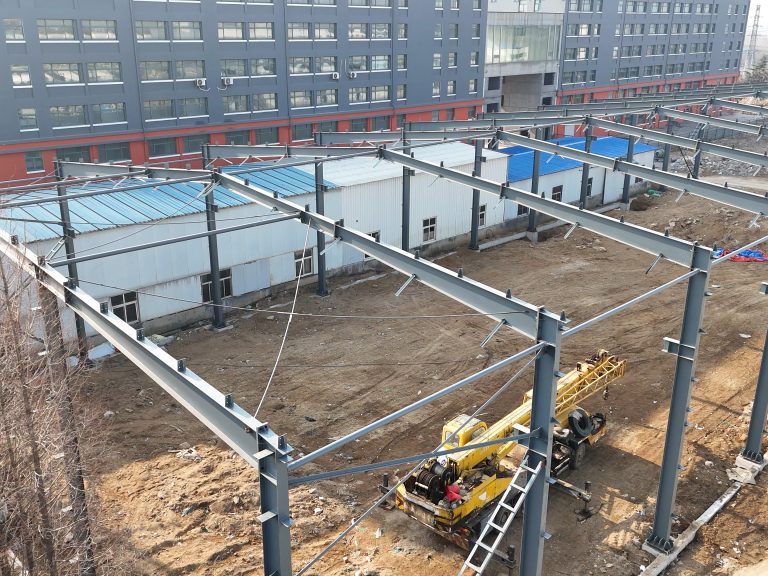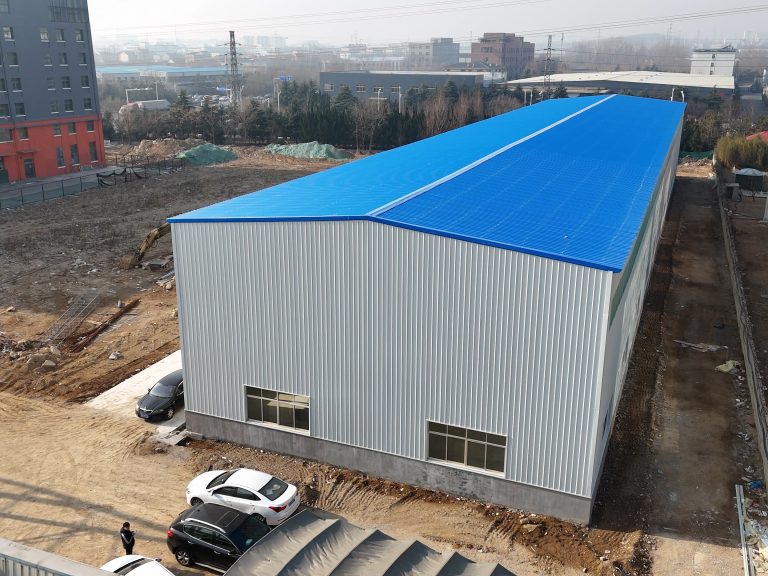Table of Contents
Benefits of Anti-Corrosion Technology in Steel Structure Livestock Greenhouses
Steel structure livestock greenhouses are a popular choice for farmers looking to provide a controlled environment for their animals. These structures offer numerous benefits, including increased productivity, improved animal welfare, and reduced labor costs. However, one of the challenges of using steel in these structures is the risk of corrosion. Corrosion can weaken the structure, leading to safety concerns and costly repairs. To address this issue, anti-corrosion technology and careful material selection are essential.
One of the key benefits of anti-corrosion technology in steel structure livestock greenhouses is the extended lifespan of the structure. By applying protective coatings or using corrosion-resistant materials, farmers can significantly reduce the risk of corrosion and prolong the life of their greenhouse. This not only saves money on repairs and maintenance but also ensures the safety and well-being of the animals housed within the structure.
Another advantage of anti-corrosion technology is the improved aesthetics of the greenhouse. Corrosion can cause unsightly rust stains and deterioration of the steel, giving the structure a run-down appearance. By using anti-corrosion technology, farmers can maintain the visual appeal of their greenhouse and create a more professional and inviting environment for both animals and visitors.

In addition to protecting the structure itself, anti-corrosion technology can also have a positive impact on the environment. Corrosion can release harmful chemicals into the soil and water, posing a threat to the surrounding ecosystem. By preventing corrosion through the use of protective coatings and materials, farmers can minimize their environmental footprint and contribute to a healthier and more sustainable agricultural industry.
When it comes to selecting materials for steel structure livestock greenhouses, there are several factors to consider. In addition to corrosion resistance, farmers should also take into account factors such as strength, durability, and cost. Stainless steel, for example, is a popular choice for its high corrosion resistance and strength, but it can be more expensive than other materials. Galvanized steel is another option that offers good corrosion protection at a lower cost, making it a practical choice for many farmers.
When choosing materials for a steel structure livestock greenhouse, it is important to work with a knowledgeable supplier who can provide guidance on the best options for your specific needs. By carefully considering factors such as corrosion resistance, strength, and cost, farmers can ensure that their greenhouse is built to last and provides a safe and comfortable environment for their animals.
In conclusion, anti-corrosion technology and material selection are crucial aspects of building steel structure livestock greenhouses. By using protective coatings, corrosion-resistant materials, and careful planning, farmers can extend the lifespan of their greenhouse, improve aesthetics, protect the environment, and create a safe and productive environment for their animals. Working with a reputable supplier and considering factors such as strength, durability, and cost can help farmers make informed decisions and ensure the success of their greenhouse project.
Importance of Material Selection for Anti-Corrosion in Steel Structure Livestock Greenhouses
Steel structure livestock greenhouses are a popular choice for farmers looking to provide a controlled environment for their animals. These structures offer numerous benefits, including increased productivity, improved animal welfare, and reduced environmental impact. However, one of the key challenges faced by farmers when it comes to steel structure livestock greenhouses is corrosion.
Corrosion is a natural process that occurs when metal is exposed to moisture and oxygen, leading to the formation of rust. In the case of steel structure livestock greenhouses, corrosion can weaken the structure, reduce its lifespan, and ultimately compromise the safety of the animals housed within. To combat this issue, it is essential to select materials that are resistant to corrosion and implement anti-corrosion technology.
When it comes to material selection for steel structure livestock greenhouses, there are several factors to consider. One of the most important considerations is the environment in which the greenhouse will be located. Greenhouses situated in coastal areas or regions with high levels of humidity are more prone to corrosion due to the presence of salt and moisture in the air. In such cases, it is crucial to choose materials that have a high resistance to corrosion, such as stainless steel or galvanized steel.
Stainless steel is a popular choice for steel structure livestock greenhouses due to its excellent corrosion resistance properties. This material contains chromium, which forms a protective oxide layer on the surface of the steel, preventing rust from forming. Stainless steel is also highly durable and requires minimal maintenance, making it a cost-effective option for farmers looking to invest in a long-lasting structure.
Galvanized steel is another material commonly used in steel structure livestock greenhouses. This type of steel is coated with a layer of zinc, which acts as a barrier against corrosion. Galvanized steel is particularly effective in protecting against rust caused by exposure to moisture and harsh weather conditions. Additionally, galvanized steel is easy to install and can be customized to meet the specific requirements of the greenhouse design.
In addition to selecting the right materials, implementing anti-corrosion technology is essential for ensuring the longevity of steel structure livestock greenhouses. One of the most common methods of corrosion protection is the application of protective coatings. These coatings act as a barrier between the metal surface and the corrosive elements in the environment, preventing rust from forming. There are various types of protective coatings available, including paint, epoxy, and polyurethane, each offering different levels of protection against corrosion.
Another effective anti-corrosion technology is cathodic protection, which involves the use of sacrificial anodes to protect the steel structure from corrosion. Sacrificial anodes are made from a more reactive metal, such as zinc or magnesium, which corrodes in place of the steel, thereby protecting it from rust. Cathodic protection is particularly useful in areas with high levels of moisture or salt, where corrosion is more likely to occur.
In conclusion, material selection and anti-corrosion technology play a crucial role in ensuring the durability and safety of steel structure livestock greenhouses. By choosing materials that are resistant to corrosion, such as stainless steel or galvanized steel, and implementing effective anti-corrosion measures, farmers can protect their investment and provide a secure environment for their animals. Ultimately, the success of a steel structure livestock greenhouse depends on the careful consideration of these factors and the implementation of appropriate strategies to combat corrosion.







